Electro-rock duo Boom Boom Satellites have remixed "A Fact of Life" by screamo outfit Fact, and the video is a fiendish feast of Noh-inspired abstract dance.
+ Video
Electro-rock duo Boom Boom Satellites have remixed "A Fact of Life" by screamo outfit Fact, and the video is a fiendish feast of Noh-inspired abstract dance.
+ Video
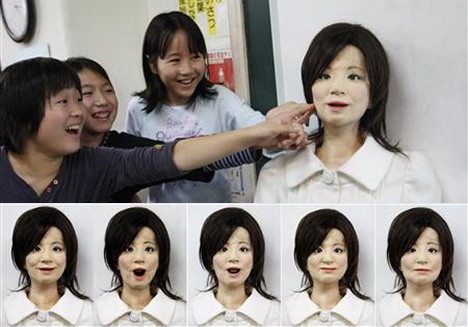
Upon returning to class after the Golden Week holidays, students at a Tokyo elementary school were delighted to find their teacher had been replaced by a robot. The talking humanoid, named "Saya," was originally developed as a receptionist robot in 2004 by professor Hiroshi Kobayashi of the Tokyo University of Science, but has recently begun taking on work as a substitute teacher.
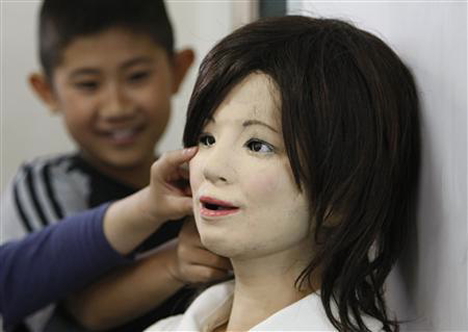
Amused students poke Saya's soft face
The robot, which can speak multiple languages, uses facial expressions to facilitate communication. With an array of motors in her head that stretch the soft synthetic skin into various positions, Saya can display emotions ranging from happiness and surprise to sadness and anger.
However, Saya needs to work on improving her classroom management skills. At present, she can't do much more than call out names and shout orders like "Be quiet." But that does not make her any less popular with the kids.
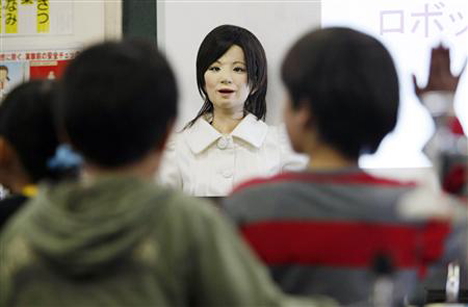
"Robots that look human tend to be a big hit with young children and the elderly," Kobayashi recently told the Associated Press. "Children even start crying when they are scolded."
[Source: Sankei]
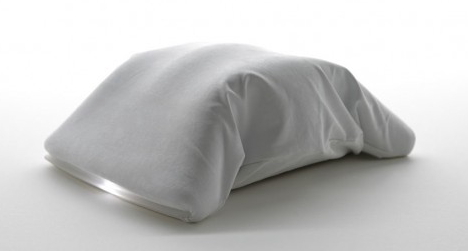
Move over, Roomba. Make way for Fukitorimushi, an autonomous floor-cleaning robot that crawls like an inchworm and uses a super-absorbent nanofiber cloth to wipe up microscopic dust and residue that ordinary vacuums leave behind. Unveiled at the recent Tokyo Fiber Senseware exposition in Milan, Fukitorimushi (lit. "wipe-up bug") is designed by Panasonic and incorporates nanofiber technology developed by textile maker Teijin, Ltd.
The robot cleans by simply dragging its nanocloth belly across the floor as it slowly crawls around in search of dirt. (Watch the video.)
Fukitorimushi, which moves around by flexing and stretching its body like an inchworm, uses "feelers" of blue-white light to search for floor grime. When it finds a dirty spot, the robot emits a red light and devotes extra effort to cleaning that area. After it has finished cleaning, the machine returns to its charging station to replenish its battery.
Fukitorimushi's body is covered in Teijin's Nanofront cloth, which is made of polyester filament fibers measuring 700 nanometers in diameter (about 7,500 times thinner than the average human hair). The nanofibers significantly increase the fabric's surface area and porosity, giving it superior wiping characteristics and the ability to absorb oil and ultra-fine dust particles less than one micron in diameter. The large surface contact area also increases the fabric's friction with the floor and makes it resistant to sliding. The robot relies on this increased friction to push itself forward while wiping the floor.
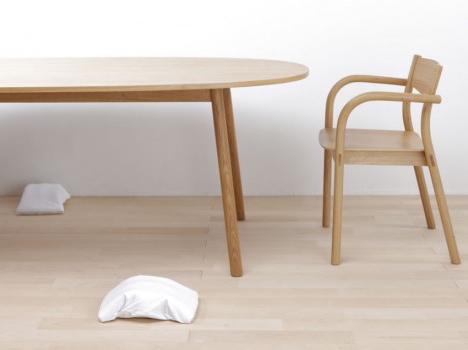
According to its creators, Fukitorimushi is also designed to engage the emotions and foster a closer relationship between humans and machines. The way the machine creeps across the floor may seem a little strange at first, but the designers say people tend to grow fond of the robotic creature after watching it for a while. In addition, the owner must periodically replace Fukitorimushi's nanocloth cover with a clean one. The designers suggest this task of looking after the Fukitorimushi may encourage a pet-like affection for the machine.
[Link: Tokyo Fiber '09 Senseware Guide (PDF)]